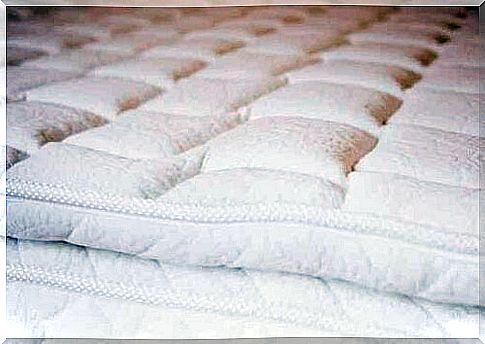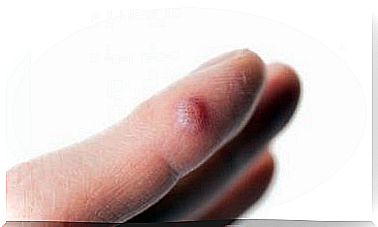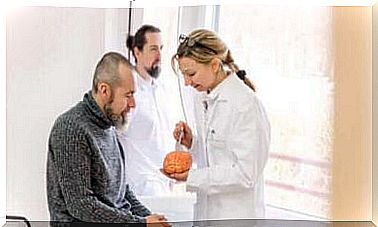The Different Stages Of Bedsores And Their Treatment

The development of bedsores will depend on the severity. Today we will tell you what bedsores are, explain the different stages of bedsores and talk about the treatment.
Bed sores (also called pressure sores) are damage to the skin and the underlying tissue due to prolonged pressure or friction against a hard surface. They often occur in patients who are bedridden for long periods.
In addition, the stages of bedsores are greater in the elderly, as these wounds cause serious problems among this age group.
They are very painful and cause a high number of local and general infections. They are located in the most prominent parts of the body, the sacrum, the femoral nodules (bony prominent locations in the upper limb or epiphysis of the femur), heels, shoulder blades and the occipital region.
The severity varies from redness of the skin to loss of the skin and can reveal the underlying bone.
The stages of bedsores

Healthcare professionals use a classification system to describe the severity and stages of bedsores. Thus, a distinction is made between four categories:
- First stage : A bedsore in the first stage is the most superficial type of injury. The affected skin area appears discolored and reddish in white patients and appears as bruises in patients with darker skin. In the first stage, the skin remains intact, but can be painful, itchy and either hot and soft or hard to touch.
- Second stage : In the second stage, part of the outer surface of the skin, ie the epidermis, or the inner part of the skin or dermis suffers from an injury. This results in the loss of skin tissue. The wound appears as an open wound or blister.
- Third stage : In this category, skin loss occurs throughout the thickness of the skin. In addition, there is also damage to the underlying tissue. However, there is no damage to muscles or bones. The wound looks like a deep, hollowed-out wound.
- Fourth stage : Of the four stages of bedsores, this is the most serious. In this situation, there is severe damage to the skin, and the adjacent tissue suffers from necrosis, ie it dies. In addition, there may also be damage to the underlying muscle or bone. Patients with this type of bedsore are at high risk of developing serious infections.
Treatment of bedsores
Since bedsores are a complex health problem caused by a number of related factors, different types of professionals must take care of the patient. Some techniques and treatments for bedsores are as follows:
Change lying position
Moving the body and changing position periodically is one of the best ways to prevent the occurrence of these injuries. It relieves pressure in cases of first and second stage of bedsores.
Mattresses and pillows

A wide range of special mattresses and pillows are available to relieve pressure on vulnerable parts of the body. Patients with more severe bedsores need a more sophisticated mattress or even a bed system.
For example, there are mattresses that you can connect to a continuous air flow that is automatically regulated to reduce the pressure at required times.
Bandages
Some examples of this type of product are:
- Hydrocolloids : These are bandages that contain a special gel that promotes the growth of new skin cells.
- Alginates : These are bandages made of seaweed that contain sodium and calcium. Studies have shown that they speed up the healing process.
Topical preparations
Doctors may also prescribe creams or ointments for a faster healing process. At the same time, they also prevent further skin damage. A type of chemical known as free radicals can also be useful in preventing cell damage at the genetic level.
Antibiotics for the treatment of bedsores
Antibiotics are useful in preventing bacterial infection and also as a precaution prevent the development of secondary infections.
In the same way, direct application of an antiseptic ointment can also cleanse them of bacteria that are already present.
Surgery
Sometimes it is not possible to heal these wounds, and doctors will have to resort to surgery to seal bedsores and prevent further tissue damage. Skin transplantation is the most common technique. Professionals take skin and muscles from another part of the body and use it to seal the wound.
Bed sores: A complex pathology
As you have learned, bedsores are very common, occur easily and also involve complicated treatment. In patients with risk factors – mainly those lying in bed due to chronic diseases – several anti-ulcer measures should be considered to improve the prognosis for these lesions.









